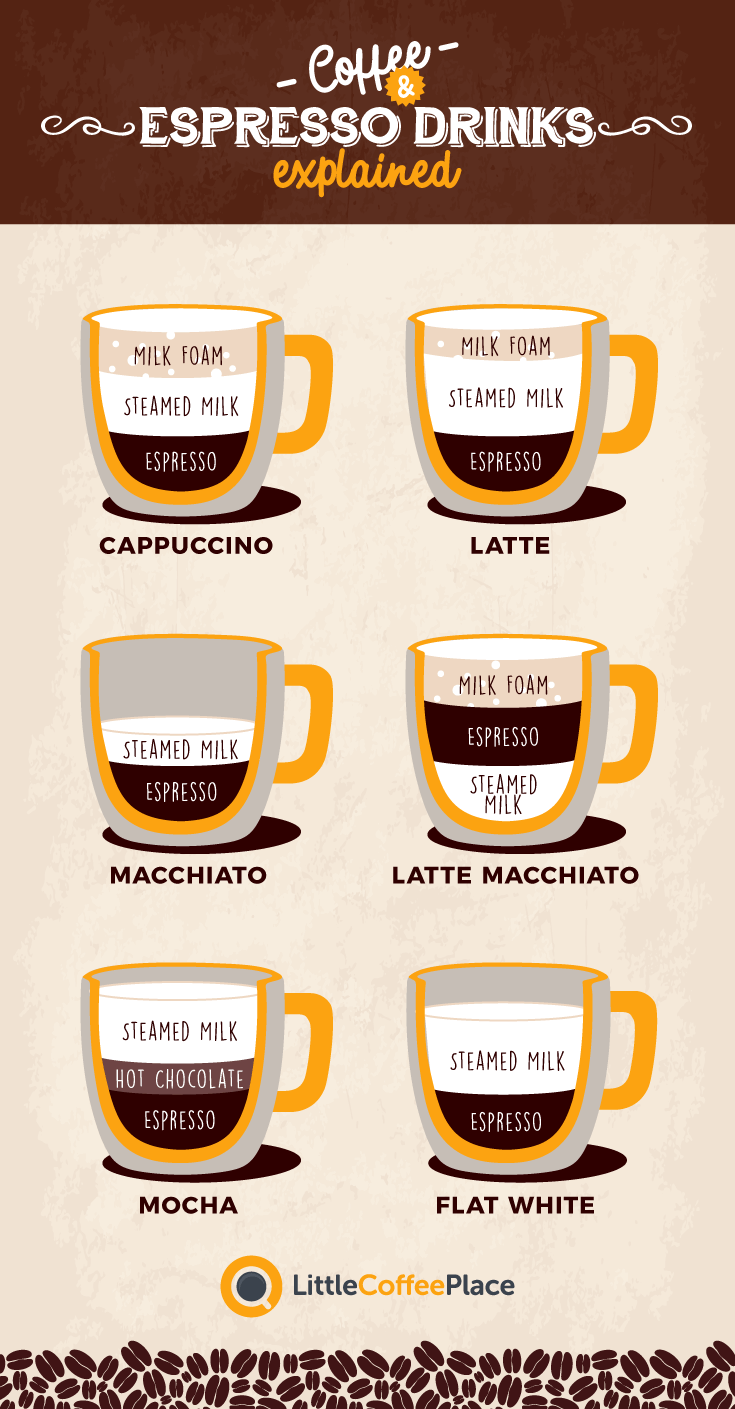Cappuccino vs Latte vs Macchiato vs Mocha: What’s The Difference?
Unless you’re a coffee aficionado or a skilled barista, it’s probably a challenge to know the difference between coffee drinks on a cafe menu by name alone.
Cappuccino doesn’t sound too far off from a macchiato, but while the names may seem to be based on trend only, there’s actually quite a bit of history behind coffee house drinks. Some of them even look very similar, but one taste, and you’ll know that a cappuccino is definitely different from a flat white or a macchiato.
So in a cappuccino vs macchiato vs latte macchiato match up how can you tell which is which. The main difference between many of the most popular coffee drinks is the amount of foam, milk, and espresso that each contains.
Coffee foam is technically made of steamed milk that has been gently whipped to add air into it. It’s that frothy layer that can often be found atop gourmet coffees, and it’s what gives many drinks their signature look. If you’ve ever seen a cup of cappuccino with a design swirled into it, what you’re actually looking at is foam.
Just like the type of coffee used to create drinks varies, the type of foam that’s nestled on top isn’t all created equally.
Microfoam has bubbles so small that they can hardly be seen, which results in a very smooth, velvety mouthfeel. Dry foam has many large bubbles that create a less smooth texture and more volume to cover the coffee.
If you’ve ever heard of anyone ordering a “bone-dry” coffee, it’s dry foam that they’re requesting on top of their drink. All foam is made of steamed milk, but the way it is whipped determines its level of smoothness.
With that in mind, here’s a guide to a few common types of coffee drinks and their differences.
Contents
Cappuccino
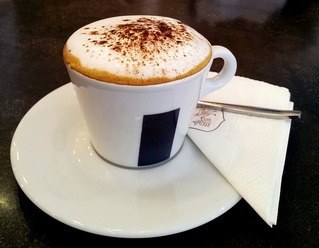
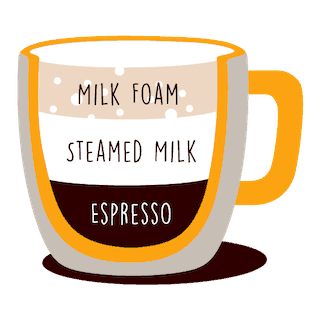
Cappuccino is a classic drink from Italy that is known for its milk foam frothy top. Lovers of coffee art often order a cappuccino because their milk foam typically has the most elaborate designs swirled on top.
It’s also common to see cappuccino with a fine dusting of chocolate powder or cinnamon on it.
The milk to coffee ratio of the cappuccino is:
Cappuccino is known for being milky, yet the espresso definitely doesn’t go unnoticed. However, those who prefer more milk than coffee often appreciate the flavor and mouth feel of this drink. The milk foam portion of a cappuccino can either be velvety or dry.
Dry foam, or a “bone-dry” foam, has big, airy bubbles and lots of volume. This is the exact opposite of a microfoam, which has tiny bubbles that can hardly be noticed.
Macchiato
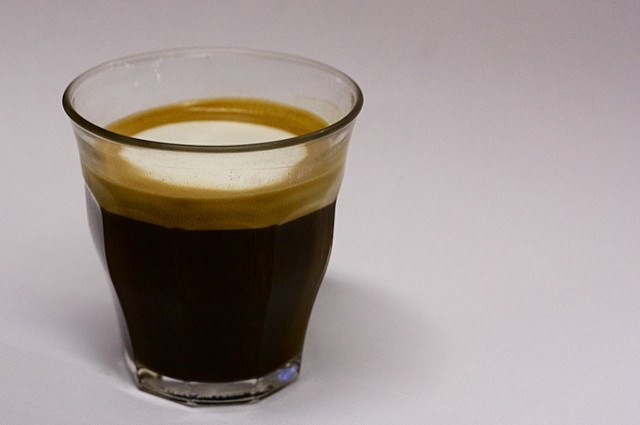
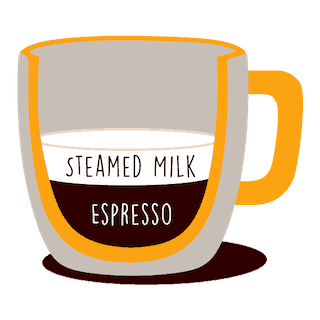
The Macchiato, also known as the Caffe Macchiato or Espresso Macchiato, has a bolder flavor than many other coffee drinks.
It’s comprised of a small amount of steamed milk with a lot of espresso. Rather than thinking of ratios, it’s easier to view the macchiatto as an espresso with a spot of milk in it. In fact, the word “macchiato” means “spotted” in Italian.
In Portugal, the macchiato is referred to as “cafe pingado”, or “coffee with a drop”. If you like your coffee to be strongly flavored, this drink is right up your alley.
Macchiato can have foam on it, but it’s usually a small layer of microfoam to allow the taste of the espresso to shine. Using high quality espresso beans in macchiato is essential, as it’s the primary flavor of the drink.
Latte / Caffe Latte
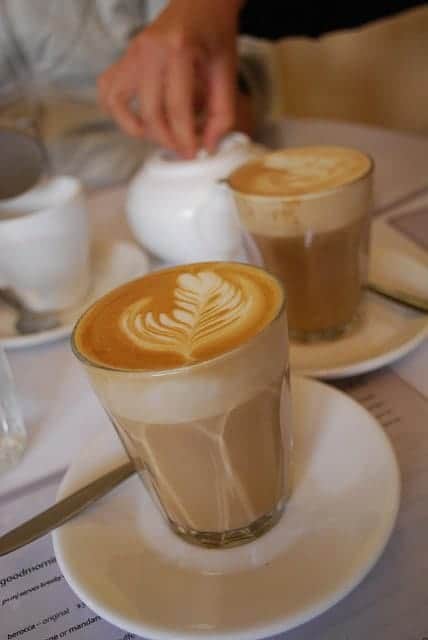

Latte — also referred to as Caffe Latte , which is an Italian term that means “milk coffee” — is all about having a smooth, silky microfoam.
The texture of the foam on a latte is very important and is what gives this coffee drink its distinct look and mouthfeel. This is slightly different than the latte macchiato which tends to be more espresso dominant.
Another difference between a latte vs macchiato is a bit of aesthetic flair. Lattes are well known for having art carefully swirled into the foam on top of them, but as long as a drink has the following ratio of milk to coffee, it can rightfully be called a latte:
Lattes originated in Europe where they’re still very popular drinks, especially at breakfast time. The French cafe au lait is a similar drink. Lattes started to gain popularity in the United States around the mid-1900s.
Mocha
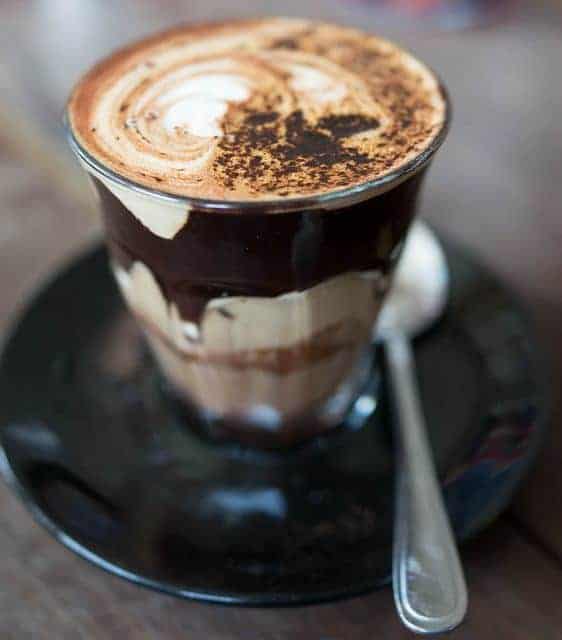
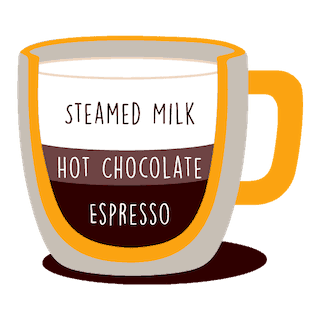
Also called Caffe Mocha or Mocaccino, the mocha is a chocolate lover’s delight.
This coffee drink combines espresso with hot milk and chocolate and is a variant of the latte. The espresso to milk ratio of a mocha is about the same as a latte, but the addition of white, milk or dark chocolate to the drink is essential.
Some cafes make their own ganache for their mochas while others use a chocolate syrup or break up chunks of chocolate to add to the drinks.
While some mocha drinks are served with foam on top, whipped cream is more typical, as is a dusting of cinnamon or cocoa powder.
Some people even like marshmallows on top of their mocha, which makes it reminiscent of a hot chocolate.
[Read More: Cafe Mocha Recipe!]
Chocolate and coffee have been combined for centuries, and it’s easy to see why. Each enhances the flavor of the other quite well — this is why many cake and confection recipes that call for chocolate also use coffee.
Flat White
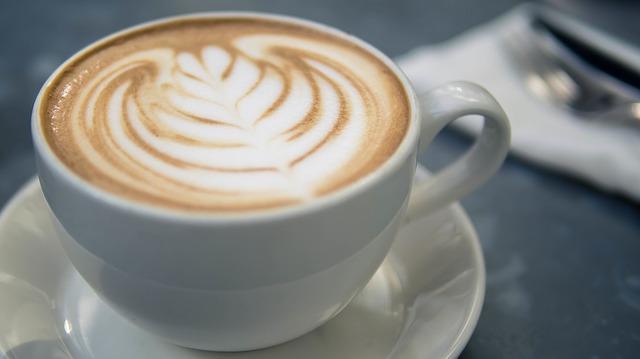
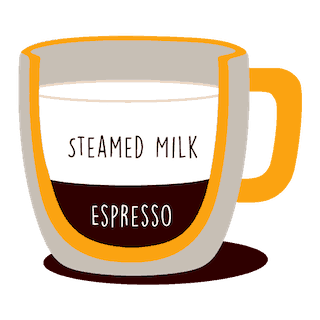
In most cafes and coffee bars, a flat white is essentially a latte with a bit less milk. Like a latte, the flat white contains a double shot of espresso.
Flat whites are typically served one of two ways: with very little or no foam, or with a lot of foam. The foam is very rarely dry, and is usually a microfoam.
The flat white originated in Australia and is a favorite of coffee drinkers who prefer a stronger taste of espresso.
The milk in a flat white serves to support or enhance the drink’s flavor while the espresso clearly dominates on the palate.
The Spanish coffee drink “cafe con leche” is similar to a flat white, but “cafe con leche” uses scalded milk and doesn’t usually have a microfoam on top.
Final Words
Now that you’ve been armed with the information you need to order or make the perfect gourmet coffee, you’re probably asking yourself which one you’ll like best.
If so, it’s helpful to focus on two factors: how much milk foam you want, and how strong you want the taste of espresso to be.
If you prefer no foam or you don’t want the foam on your coffee to be highly textured, go for a flat white or latte. Love your coffee strong? Then macchiatto is your best bet.
Those who like flavored coffees can’t go wrong with the chocolaty mocha. Whether you try just one of these coffee drinks or several, you’ll now be able to tell the difference between them all by name alone.
“Macchiato” Photo by Christopher Neugebauer | CC BY-SA
“Mocha” Photo by Charles Haynes | CC BY-SA
